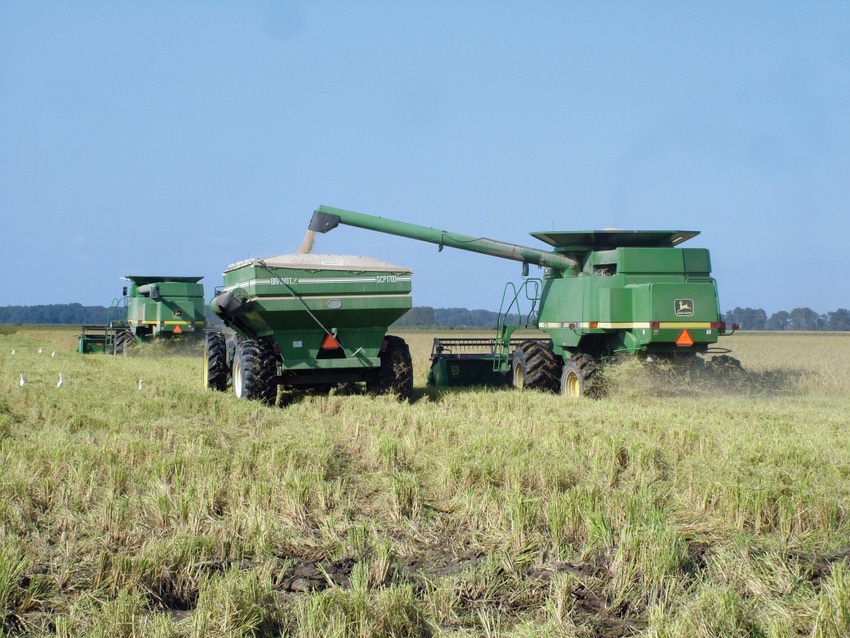
Rice harvest a mixed bag for Louisiana farmers
Classifying the 2012 rice harvest in south Louisiana as good, bad or mediocre is proving to be a difficult challenge.“Some people are thrilled to death, and some are wondering what happened." -- Barrett Courville, LSU AgCenter county agent in Acadia and Jefferson Davis parishes.
August 15, 2012

Classifying the 2012 rice harvest in south Louisiana as good, bad or mediocre is proving to be a difficult challenge.
“Some people are thrilled to death, and some are wondering what happened,” said Barrett Courville, LSU AgCenter county agent in Acadia and Jefferson Davis parishes.
Courville said some farmers’ yields are exceeding 50 barrels per acre (82.5 hundredweight) while others are considerably lower, including a farmer who reported an overall harvest of 10 barrels per acre (16.5 hundredweight).
“It’s a mixed bag,” said Johnny Saichuk, LSU AgCenter rice specialist. “The severity of disease has made a huge difference.”
Steve Linscombe, director of the LSU AgCenter Rice Research Station, agreed with that assessment. “Yields are as variable as I’ve ever seen them.”
Linscombe said blast disease was the worst this year he’s ever seen. But many farmers whose crops were minimally affected by disease had one of their best crops ever. “It was all dependent on how much blast pressure you had, and when it started.”
Linscombe said the south Louisiana harvest is about 70 percent complete.
The harvest in Vermilion Parish is more than two-thirds finished, but consistent rains are making the final third difficult to bring out of the fields, according to Stuart Gauthier, LSU AgCenter county agent. “If we wouldn’t have gotten heavy rains, we would have finished even earlier.”
Yields have been running 5-10 barrels more than last year, Gauthier said. The increase can be explained by an early planting trend and reduced disease pressure. “The rice is beautiful. It was just a good growing season.”
Average yield
The average yield is likely to be in the low 40 barrels (65 hundredweight), compared to 36 barrels (58 hundredweight) last year. Yields ranged from more than 60 barrels (97 hundredweight) to some disease ravaged fields that produced less than 20 barrels.
Gauthier said the LSU AgCenter variety, CL111, has proven its worth this year for its disease resistance.
Salt levels in irrigation water decreased from steady rainfall this year. But some areas received 22 inches of rain in just the past few weeks, making for a muddy harvest.
Soybeans were hit hard by the hard rains, Gauthier said, with some fields likely to be total losses.
The rice acreage at 45,000 this year in Vermilion Parish is about 12 percent less than last year, Gauthier said.
Keith Fontenot, LSU AgCenter county agent in Evangeline Parish, said his farmers reported a good year. “For the most part, the blast disease was not as heavy here as it was in other places.”
Yields were running in the mid-40 barrel to mid-50s, he said, good but not record-breaking.
Courville doesn’t think the amount of second crop acreage will be affected by the poor yields some farmers experienced. “Sometimes the second crop will compensate for a low yield in the first crop.”
Saichuk said many farmers have been able to harvest without leaving deep tire tracks in fields that have received regular rainfall. Dry planting has the extra benefit of a firmer seedbed that resists rutting.
Linscombe expects the second-crop acreage will be about average. “I have seen quite a few fields flooded up.”
You May Also Like



